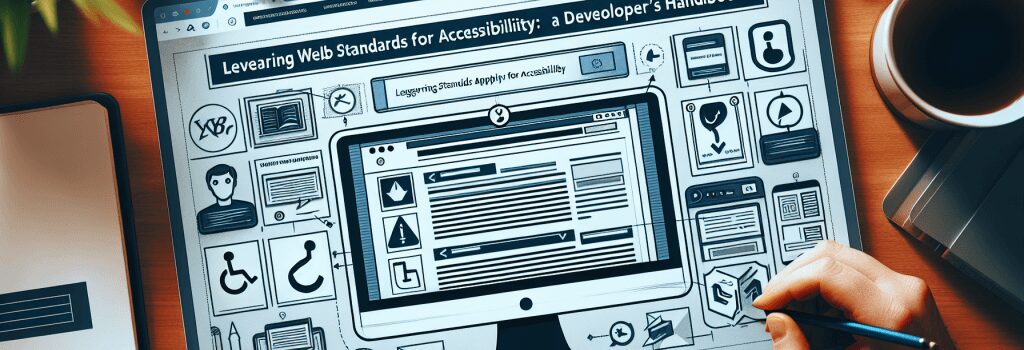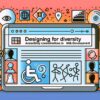Leveraging Web Standards for Accessibility: A Developer’s Handbook

Leveraging Web Standards for Accessibility: A Developer’s Guide
As web developers, it’s our responsibility to create websites that are not only functional and visually appealing but also accessible to everyone, including people with disabilities. With the rise of digital technology, ensuring web accessibility has become a crucial aspect of web development, enabling all users, regardless of their abilities, to access information and services online. This handbook aims to guide developers on how to leverage web standards to create accessible websites effectively.
Understanding Web Accessibility
Web accessibility refers to the practice of making websites usable by people of all abilities and disabilities. When sites are correctly designed and coded, people with disabilities can use them. However, currently, many sites and web tools are developed with accessibility barriers that make them difficult or impossible for some people to use.
Why Is Web Accessibility Important?
1. Social Responsibility: Web accessibility is a matter of equity and equal opportunity. Access to information and communications technologies, including the web, is defined as a basic human right by the United Nations Convention on the Rights of Persons with Disabilities.
2. Legal Compliance: In many countries, web accessibility is not just an ethical responsibility but a legal requirement. Not adhering to web accessibility standards can lead to lawsuits and heavy fines.
3. Business Benefits: Accessible websites have wider reach, better search engine optimization (SEO), and tend to have faster load times and more robust performance.
Key Web Standards for Accessibility
To ensure web accessibility, several standards and guidelines have been established. The most notable among these is the Web Content Accessibility Guidelines (WCAG), developed by the World Wide Web Consortium (W3C). WCAG is considered the gold standard for web accessibility and is organized around four principles, often summarized as POUR:
– Perceivable: Information and user interface components must be presentable to users in ways they can perceive.
– Operable: User interface components and navigation must be operable.
– Understandable: Information and the operation of the user interface must be understandable.
– Robust: Content must be robust enough that it can be interpreted reliably by a wide variety of user agents, including assistive technologies.
Implementing Accessibility Using HTML, CSS, JavaScript, and WordPress
HTML for Accessibility
– Semantic HTML: Use semantic HTML tags (;<header>>, ;<nav>>, ;<main>>, ;<footer>>, ;<article>>, etc.) to structure your website. This helps screen readers understand the layout and navigate the content more effectively.
– Alt Text for Images: Always provide alt text for images. This allows screen reader users to understand what the image is about if they can’t see it.
– Form Labels: Ensure all form inputs have associated labels. This is crucial for users who rely on screen readers to fill out forms on your website.
CSS for Accessibility
– Responsive Design: Use responsive design techniques to ensure your website works well on a range of devices and screen sizes. This is particularly important for users with low vision who might need to zoom in or modify content display settings.
– Color Contrast: Ensure there is adequate contrast between text and background colors. WCAG guidelines offer specific contrast ratio recommendations to ensure text is readable for users with visual impairments.
JavaScript for Accessibility
– Dynamic Content Updates: When updating content dynamically (without page refresh), use ARIA (Accessible Rich Internet Applications) roles and properties to inform screen reader users of the change.
– Keyboard Navigation: Make sure all interactive elements are navigable and usable with the keyboard alone.
WordPress for Accessibility
– Choosing Accessible Themes: When selecting a theme for your WordPress site, look for themes that are labeled as “Accessibility Ready.”
– Plugins for Accessibility: Several WordPress plugins can help improve your site’s accessibility, including tools for creating accessible forms, adding skip links, and checking color contrast.
Conclusion
Creating an accessible web is a shared responsibility among web developers, designers, content creators, and platform developers. By leveraging web standards for accessibility, we can create more inclusive web experiences that cater to the needs of all users. Remember, an accessible web benefits everyone and leads to a more inclusive digital world. Together, let’s commit to building accessible websites that ensure no one is left behind.


